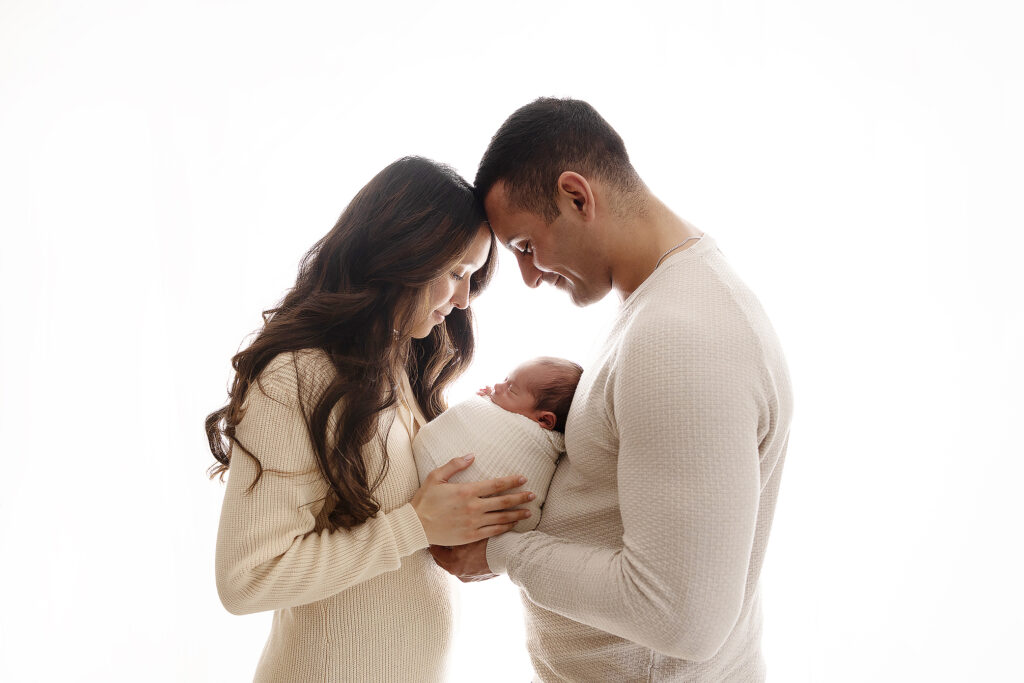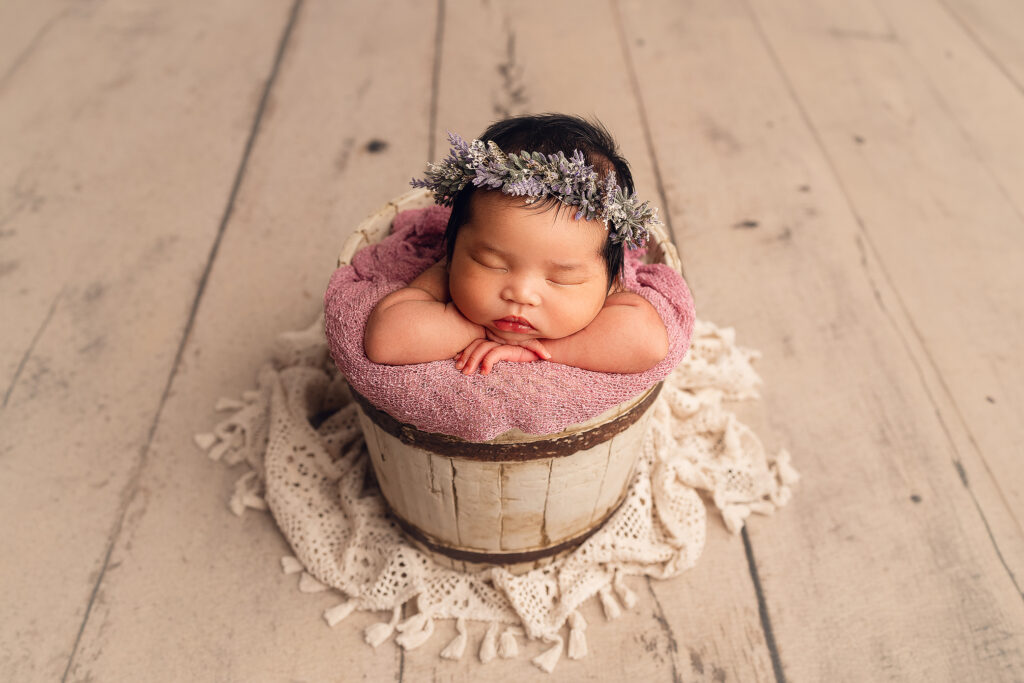The experience of welcoming a newborn into the world is transforming. The innocent look, the silky hair, and the small fingers are all magically wrapped in a package of happiness. Because of this, a lot of parents decide to have a newborn photoshoot to record these priceless moments. However, did you realize that these photo shoots involve more than merely positioning a baby and taking a picture? Photographing newborns demands preparation, expertise, and close attention to detail. We’ll explore some interesting newborn photography things in this piece that you might not be aware of.
1. The Timing is Important.
For a newborn photoshoot, time is everything when it comes to getting those cute, drowsy, curled-up photos. The first two weeks after delivery are the ideal times for a newborn picture session. Babies are typically still in the “newborn” phase during this time, which means they have greater limb flexibility, sleep for longer periods, and are simpler to pose. After this time, newborns start to become more awake, making it a bit more difficult to get the calm photos that parents adore.
While some photographers may still arrange photo shoots later, most photographers recommend arranging the session when the infant is 5–10 days old. Just be aware that if the infant is more attentive and awake, it can take longer to achieve those peaceful pictures.
2. The Worth of Comfort
The goal of newborn photo shoots is to ensure the baby is safe and comfortable during the session, not only to take a photograph. The setting for the picture session should take into account the fact that babies are still getting used to life outside the womb. To keep the infant comfortable, a newborn photographer’s studio or home is set up with warm lighting, comfy blankets, and soft lighting.
A lot of photographers will also make sure the baby is comfortable by utilising props and coverings that don’t hurt or limit mobility. A competent newborn photographer will do all in their power to ensure the baby is at ease throughout the photo session since no parent wants their child to be fussy or uncomfortable.
3. Prioritise Safety
Creating stunning pictures isn’t the only goal of a newborn photo shoot; safety comes first. Newborn photographers are educated to make sure that every posture and arrangement is safe for the infant because newborns are sensitive. Newborns are frequently posed using certain ways by photographers to prevent any pressure on their necks or joints.
For instance, the photographer may gently lead the infant into a curled-up pose with their hands or use careful editing to “compose” the picture afterwards. Although buckets, bowls, and baskets are frequently used as props, they are always watched, and the infant is never left alone. To put it briefly, a skilled newborn photographer will never put the baby’s safety ahead of capturing the ideal moment.
4. Parents Play a Significant Role in the Photo Shoot
Many parents are unaware of their level of involvement in the picture session. To create enduring family memories, many newborn photographers like to incorporate parents or siblings in the pictures, even if the baby may be the main subject. When parents or siblings are holding or looking at the infant softly, those are frequently the most heartwarming moments.
Indeed, some newborn photographers focus on “lifestyle” sessions, in which they photograph the infant in the home setting as the parents engage in natural interactions with their kid. These images can be equally as lovely as the conventional posed pictures and have a more natural vibe.

5. The Details Are Just as Important as the Baby
In a newborn picture shoot, every tiny detail matters, and the photographer’s ability to see them is essential. These features, which include the newborn’s gentle creases, fluttering eyelashes, and tiny toes, convey the tale of the baby’s early days. A skilled photographer will focus on these priceless details and ensure that every moment, no matter how fleeting, is captured.
To showcase a variety of the baby’s personality or traits, the photographer may also shoot pictures of the child wearing different clothing and use a range of backgrounds and colours. Because they are everlasting mementoes of the newborn stage, these photos are frequently framed and kept for a lifetime.
6. Patience is Key
A newborn photoshoot is not a rushed process. Babies need time to settle into poses, eat, be changed, and even take breaks for naps. Expect a session to last anywhere from 2 to 4 hours, depending on how cooperative the baby is. It’s normal for newborns to cry or need to be soothed during the shoot, and it’s important to let the photographer guide the process while remaining patient.
For parents, this means being prepared for a bit of a marathon but also embracing the unpredictable nature of babies. The more relaxed everyone stays, the better the final photos will be. Newborn photoshoots are about capturing the love and tenderness between parent and child, and sometimes that means taking time to slow down and enjoy the process.
7. Editing is Part of the Magic
After the photoshoot, the magic continues in post-processing. Newborn photographers spend time editing the images to ensure they look perfect. This editing can include adjusting lighting, enhancing skin tones, removing blemishes, and even editing out any distracting elements from the background.
The goal of editing in newborn photography isn’t to drastically alter the baby’s appearance—it’s about enhancing the natural beauty of the image. Most parents want to preserve the raw innocence of their baby, and professional photographers understand this balance and work to create images that are both realistic and artistic.
Conclusion
Newborn photoshoots are not just about capturing an image—they are about preserving fleeting moments of a baby’s early life. From ensuring the baby’s comfort and safety to creating artistic images filled with love, newborn photography is an art that requires skill, patience, and a deep understanding of both the baby’s and the parent’s wishes.
So, if you’re planning a newborn photoshoot, remember that behind every beautiful picture is a lot of hard work, creativity, and care. Whether you’re documenting your child’s first few weeks of life or creating timeless family memories, these photos will remain a treasured part of your family history for years to come.

